This first table shows the AMS’s Watts/10 Delta Temp numbers in a quick glance table format.
Using the data compiled from the Aqua Computer AMS 360 thermal testing I have compiled the following tables in an attempt to show other ways of how its performance varies against itself at the flow rates and fan speeds tested. Effectively these show percentage gains relative to a reference point. It’s an interesting way to show gains/losses while changing a variable.
First let’s focus on 1300 RPM as our reference and see how much gain or loss in performance we get by changing fan speed.
While 25-30% may seem like a decent change at first, it’s much less than other radiators which is why the colors are quite neutral and not green or red. In other words the AMS radiator just doesn’t scale well with airflow. In the next table we then focus on the effect of changing the flow rate with 1.0 GPM as the base line:
Here we can see that as expected flow rate matters only a small amount, but matters most as airflow grows. How about we combine both flow rate and fan speed as reference points and have a look at 0.5 GPM & 750 RPM as the reference point:
Interestingly we can see that if you ran 1300@0.5GPM you could gain similar performance either by turning your fans up to 1850RPM or by turning your pump up to 1.5GPM. Lastly, we change the reference and choose our centre 1300 RPM and 1.0 GPM as our reference point to show both effects concurrently:
So from the data above we can get a very good idea of how the AMS 360mm radiator performs relative to itself. But there is a large selection of 360mm radiator models to choose from, released from numerous manufacturers. So, we need to start comparing performance between them. To see how the AMS performed against the other radiators tested, I have included the averaged flow rate comparison charts from the Round Up. We know that the flow rate has little impact on thermal performance so averaging of the 3 flow rate results gives us a good look at head to head performance at the rpm speeds tested at with even less error.
Push Only Data vs Competition
Let’s focus on the Push Only results for now and come back to the Push/Pull data later. While for Push/Pull we tested three flow rates, the Push Only testing was conducted only at 1GPM in order to save time.
Let’s start with 750RPM and see how it compares to the competition:
So we have discovered that the AMS performs quite well here. In 7th place it was ~ 5% behind the category winner.
Let’s see how jumping to 1300 RPM Push will change things:
It seems the low fin count of the AMS has caused the performance to drop dramatically with the increased air flow. In reality of course the AMS still does better, but the other radiators performance improved much more dramatically with the increased air flow, leaving the AMS in their wake. In 3rd to last place the AMS was now 14% behind the category winner. I think we can guess where the 1850 RPM results are heading.
Yes, the AMS slipped again. Finishing in 2nd last place, a whopping 20.5% behind the winning rad.
So in Push Only the AMS 360 did at least perform well at one data point – 750 rpm.
Push/Pull Data vs Competition
Now let’s take a look then at the Push/Pull data. For Push/Pull we have averaged the results from the 3 flow rates at which we tested. If the trend from the Push Only results continue, this will not be pretty:
The AMS finished in 3rd last place in the Push/Pull low fan speed category, ~12.5% behind the winning rad. This is disappointing given the Push 750 RPM data was not horrible. The second row of fans clearly favors the “flat” tube style radiators. 1300RPM will surely make things worse:
In the 1300 rpm category the AMS is second last only besting it’s slimmer stable mate, the Radical 2. The AMS is now around 23% behind the category winner. There is just one more nail in the coffin to go – 1850 RPM:
Finishing in 2nd last place again, the AMS is now around 31% behind the high speed fan category winner. The next plots were put together using all the fan speeds at only the 1.0 gpm flow rate with both Push Only and Push/Pull fan assemblies so we can see where the AMS placed in the grand scheme of things. By now it should be clear what to expect but it’s interesting to directly compare Push and Push/Pull performance:
750 RPM and 1.0 GPM – Push & Push/Pull data merged:
At 750RPM then the Push/Pull AMS is already being beaten by three radiators with only push fans. The best AMS result – 750RPM push only does however itself beat one radiator with push/pull fans – it’s stable mate the Radical 2.
1300 RPM and 1.0 GPM – Push & Push/Pull data merged:
No surprises here at 1300RPM the AMS always lagged behind the competition. Finally let’s take a look at the merged data for Push and Push/Pull @ 1850 RPM @ 1.0 GPM.
This plot really makes it clear then that the AMS 360 is a simply a poor performing radiator. While not the worst of the test group, it was not far from it at every data point that we tested at in Push/Pull configuration. The AMS just cannot dissipate the same amount of heat from the coolant as the other rads in the test group.
From all of these results we can create a “master performance factor”. The radiator with the best cooling ability (W/10ΔT) at each gpm/rpm combo was awarded a score of 100, and each other radiators W/10ΔT result was scored as percentage of the top performer:
All those low numbers and red boxes confirm what was shown previously, that the AMS is not capable of competing with the competition in the heat dissipation department. The 750rpm Push Only percentage numbers do appear better, but it must be remembered that all the numbers are low in this category, so the percentage numbers will be much closer also.
Then all these percentage scores were averaged giving us the Averaged Performance Factor of each radiator. This way of looking at the comparison takes away any advantages that a radiator may have at higher or lower fan speeds and looks at an overall average. While this appears fair it does tend to favor those radiators that are all-rounders and those radiators which do very well at high RPM. Most users should be more focused on their specific use case. Check in the Round Up for performance comparisons at every gpm/rpm combo for even more details and cross comparison results.
First up the Push Only Averaged Performance Factor:
Here the single good 750rpm result boosts the AMS’s ranking making it appear better than perhaps it is.
Focussing on Push/Pull, there were no results which helped the AMS out in it’s Performance Factor ranking.
The AMS 360’s results were second last after averaging – no surprises there given that it placed so poorly at each data point.
It has been shown that that the AMS is a very poor performer and at some stage we have to start pointing towards possible reasons for it. As with the Radical 2, I believe that the large round tubes and relatively flat fins are the reason behind the AMS’s poor heat dissipation (relative to the competition). The AMS 360’s very low fin count of just 8 FPI is most likely another contributing factor.
Whatever the reasons, the thermal performance results are simply disappointing.
Next up – Summary!








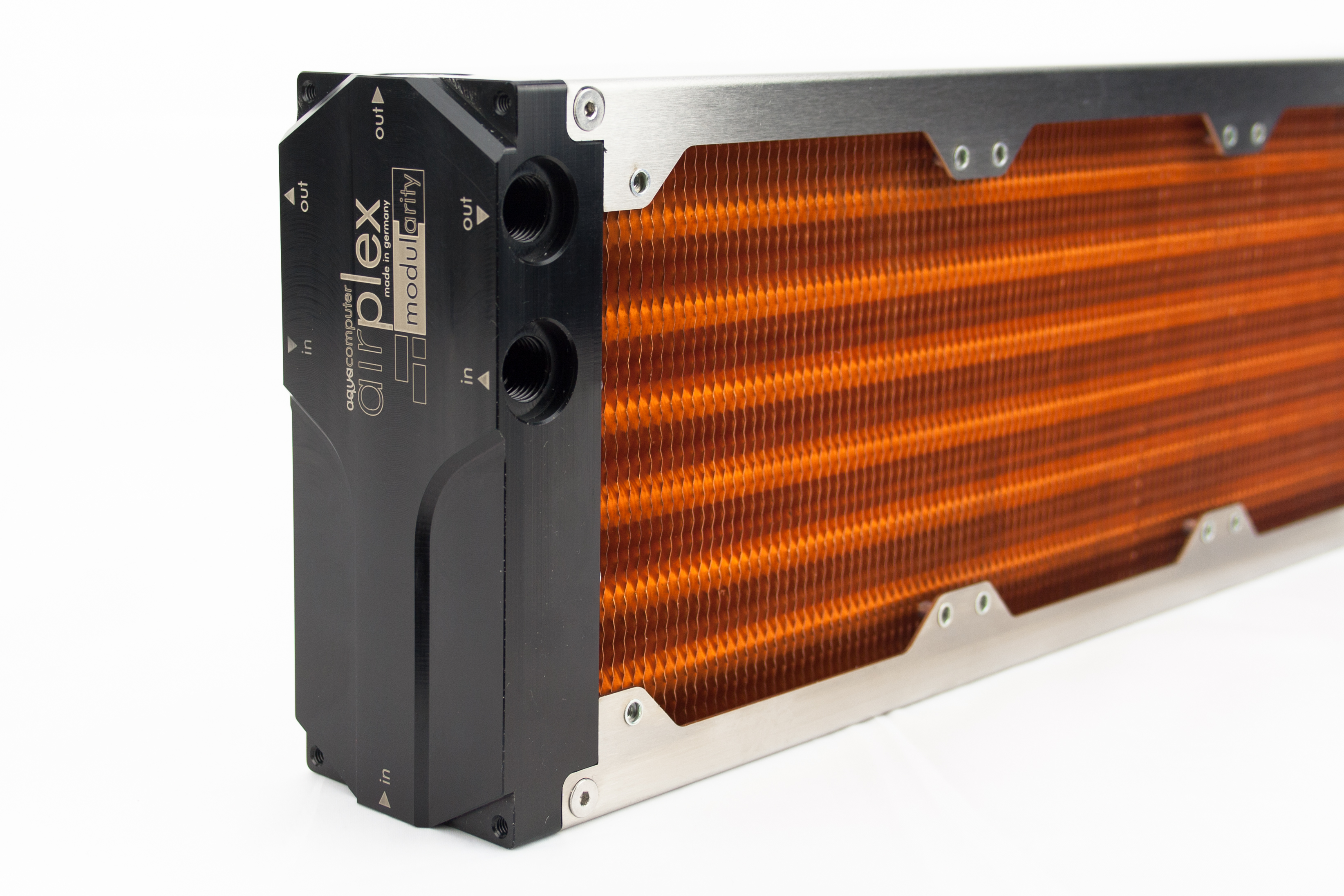
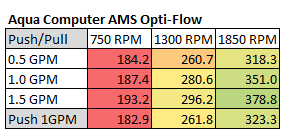
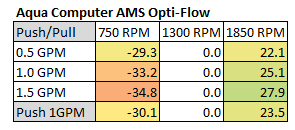
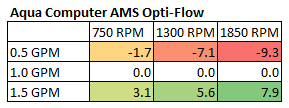
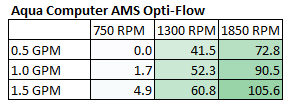
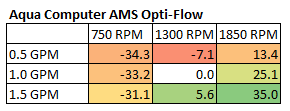
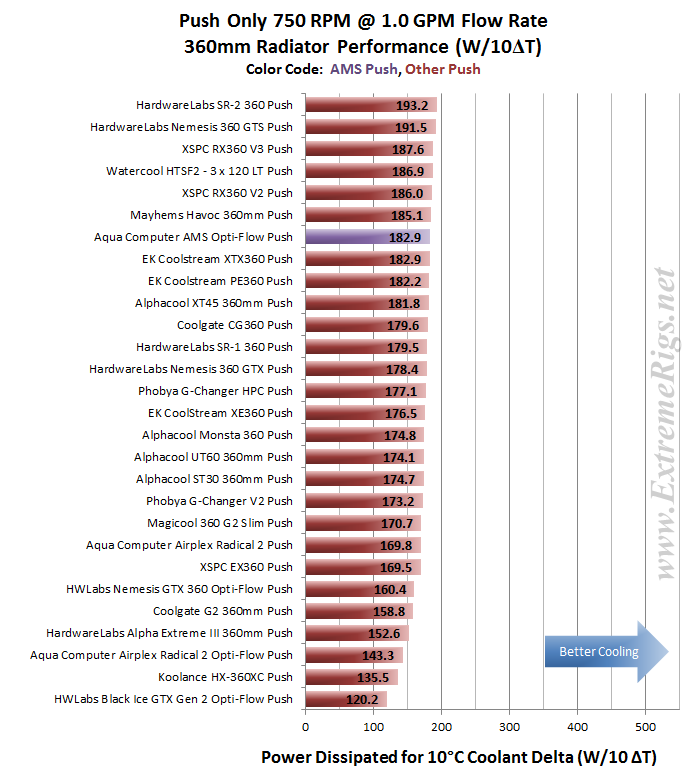
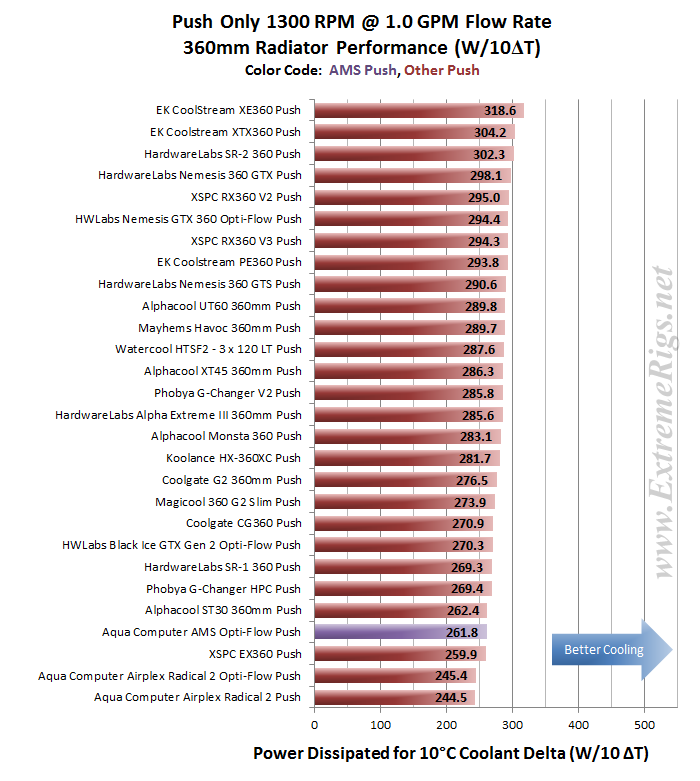
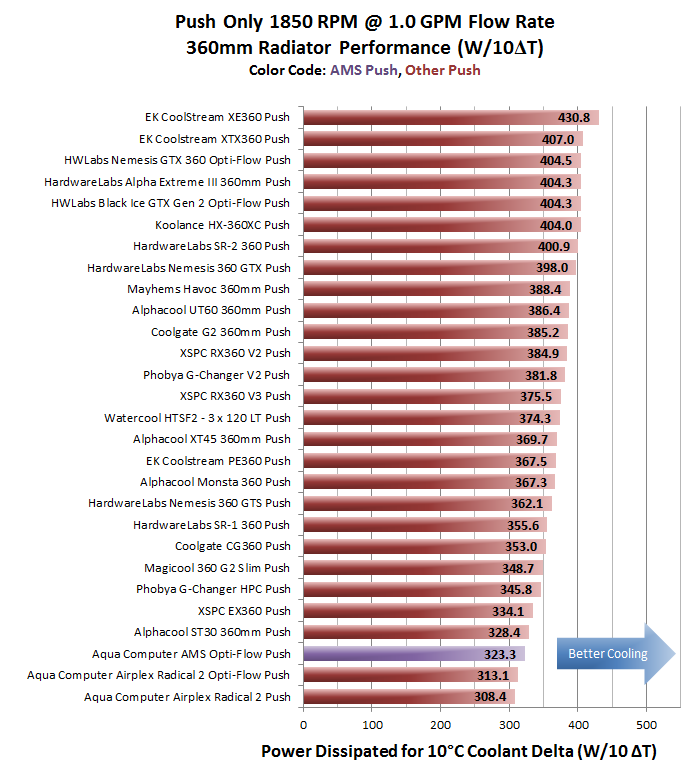
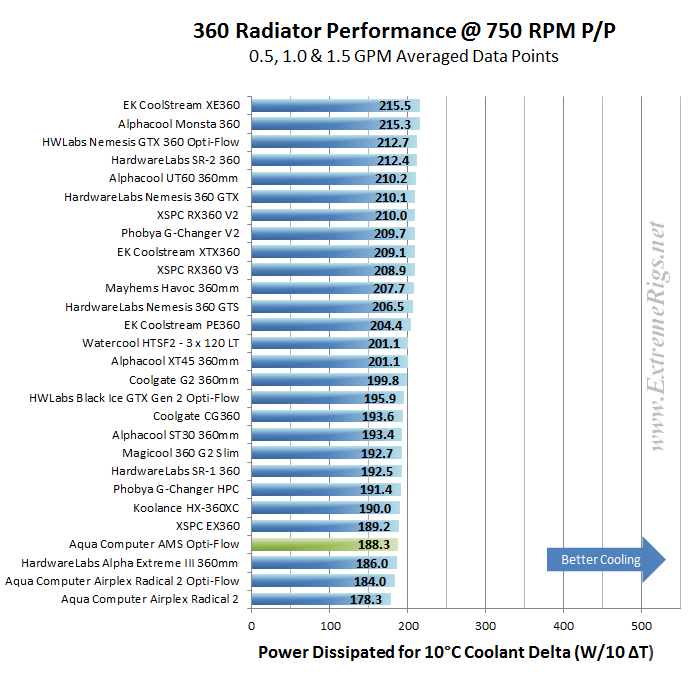
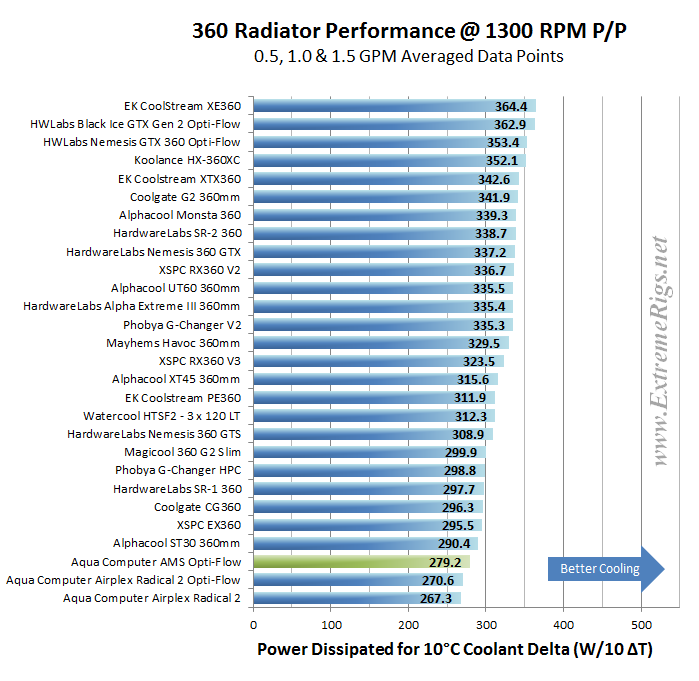
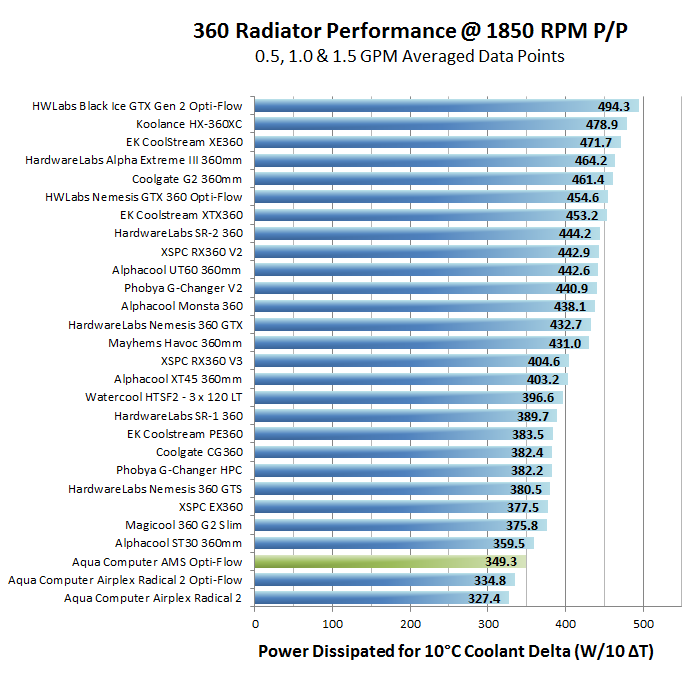
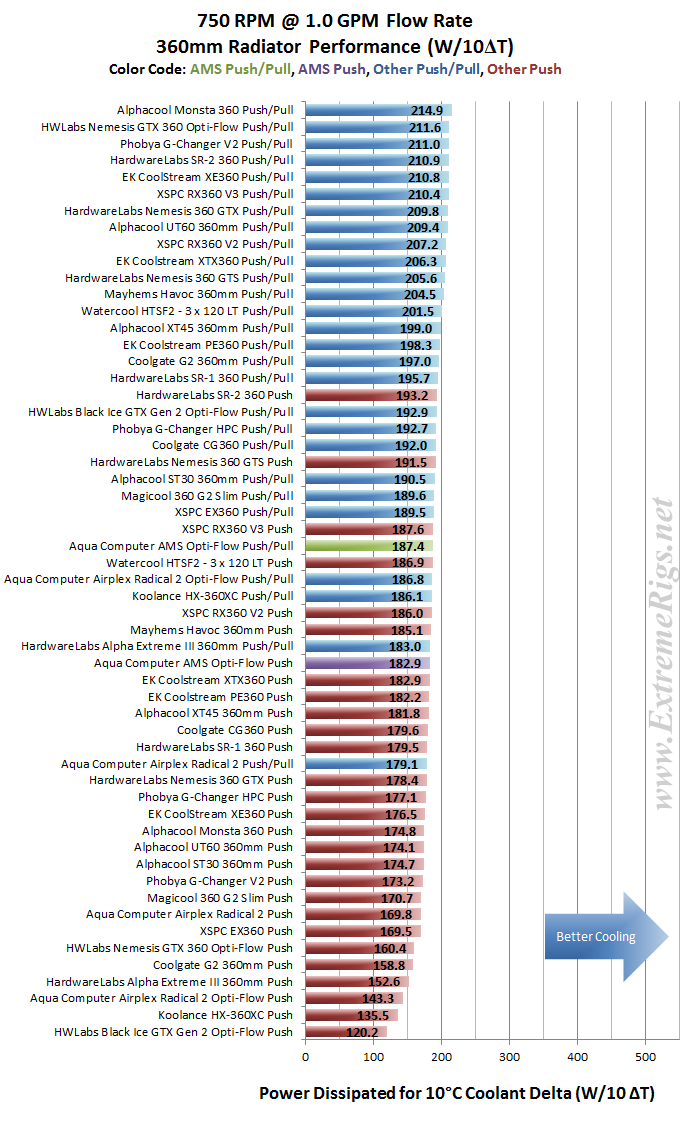
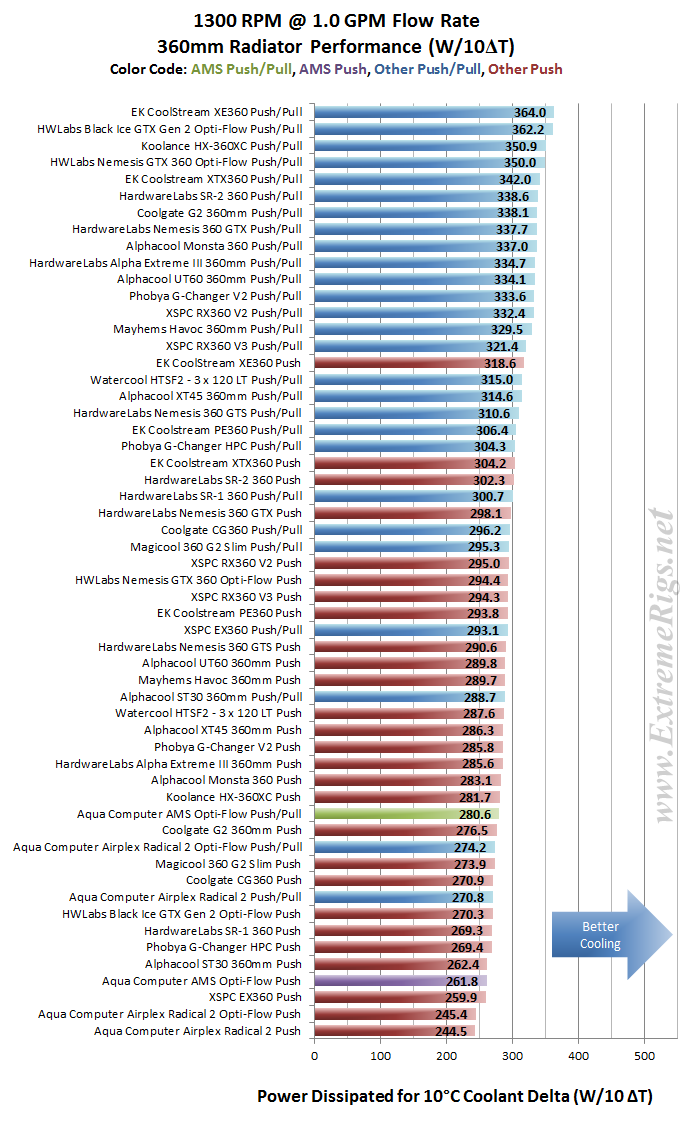
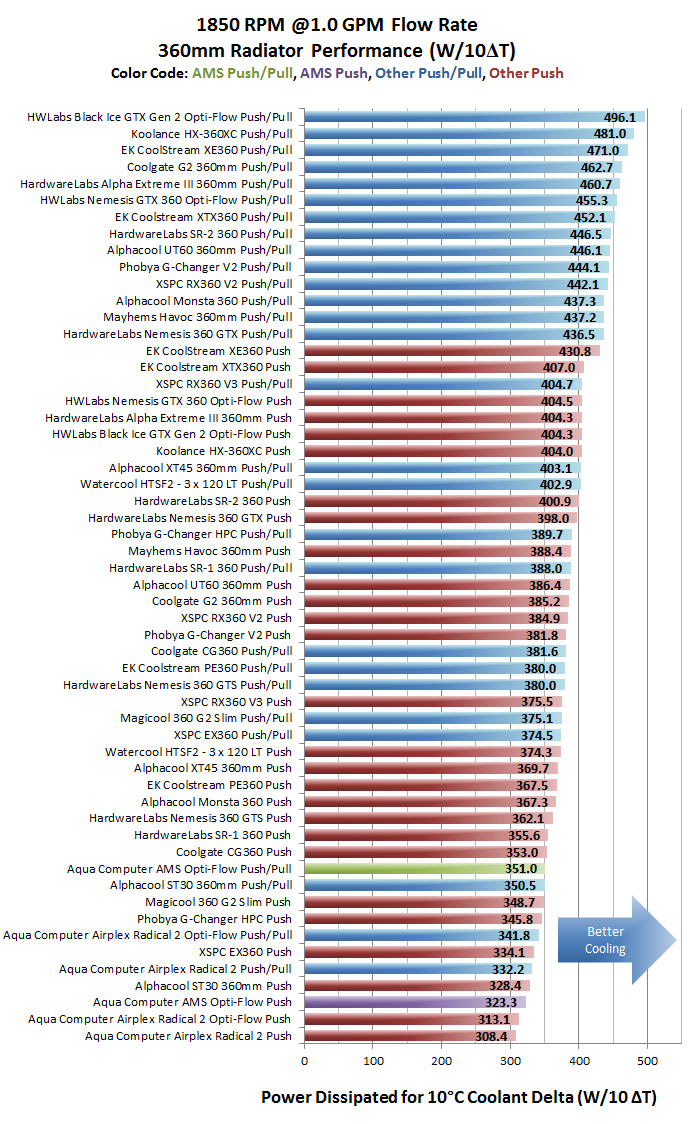






[…] Aqua Computer AMS Copper 360mm Radiator Review […]
[…] UT60 360 Radiator Alphacool XT45 360 Radiator AquaComputer Airplex Radical Copper 360 Radiator AquaComputer AMS 360 Radiator Coolgate CG 360 Radiator Coolgate G2 360 Radiator EK SE 360 Radiator EK PE 360 Radiator EK XTX 360 […]
[…] […]
Comments are closed.